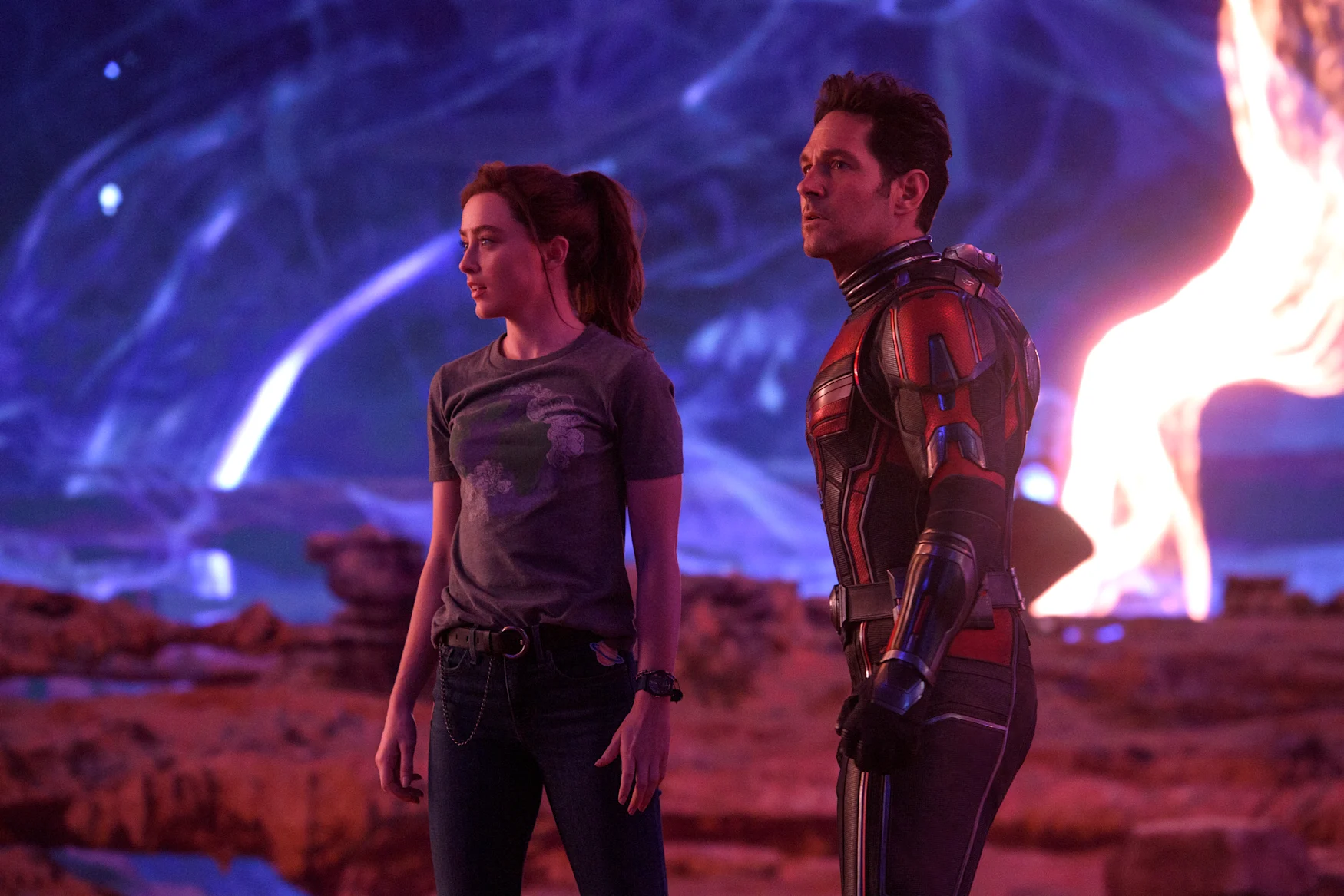‘Ant-Man and the Wasp: Quantumania’ broke me
Early on in Ant-Man and the Wasp: Quantumania, our hero Scott Lang (Paul Rudd) and his daughter Cassie (Kathryn Newton) are warped into a quantum-level universe. It’s filled with alien biology and vistas that wouldn't be out of place on distant planets. But while that sounds like the perfect setup for a fun sci-fi romp, I never bought it. And, unfortunately, the actors didn't appear to buy it either. The backgrounds looked like psychedelic screensavers, and, similar to the Star Wars prequels, there was an uncanny disconnect between the live humans and their mostly digital surroundings.
I found the aesthetic so viscerally ugly, it made me fear for the future of the Marvel Cinematic Universe, and for anything else made with ILM's StageCraft technology (AKA “the volume”). That realization surprised me, since I've mostly enjoyed how that tech helped make The Mandalorian's unique worlds come alive. The volume is a series of enormous LED walls that can display real time footage. Together with interactive lighting, it makes actors seem like they’re actually walking around artificial environments. Another plus? It also helps the lighting look far more realistic, something that was particularly noticeable on Mando's polished armor.
So what the hell happened to Quantumania? Its artificiality seems partially intentional, as it's trying to evoke pulp fantasy and even a bit of Star Wars. But somewhere along the line, director Peyton Reed forgot to ground its fantastical visuals with anything resembling human emotion. When Ant-Man, his daughter, or their tiny-tech compatriots, Hank Pym (Michael Douglass) and Janet Van Dyne (Michelle Pfeiffer), enter the Quantum Realm, there's little room for awe and wonder. Sure, they occasionally quip about something weird: buildings that move! An alien intrigued by body holes! But we quickly move onto a rote sci-fi tale of rebellion against an evil conqueror (in this case it's Kang, played by Jonathan Majors.)
Vulture’s Bilge Ebiri, who calls the film “a cry for help,” succinctly describes why Quantumania falls flat: “The action is tired, the universe unconvincing, and nobody on screen looks like they want to be there. They don’t even look like they know where there is.”

Marvel
Clearly, we can't blame”the volume” for all of the film's faults, it's just another tool in a director's kit. In an interview with Collider, Reed said that he wasn't sure if the technology would work out for Quantumania, but eventually he found it to be “great for certain environments, but not necessarily right for other ones.” He later added “There are limitations to it [the volume], and we push that system to its limit on this movie… What works so well in Mandalorian is they have a lot of lead time, because they're doing a whole series, to invest and create these environments, and on the schedule we were on, it's not always right for that situation.”
Several anonymous VFX workers told Vulture that Quantumania’s hectic production schedule was one reason its computer generated worlds fall so flat. The higher-profile Black Panther sequel, Wakanda Forever, was a higher priority for Marvel (no surprise when that first movie made over $1.3 billion globally) when it came to VFX work. And there were apparently late-stage changes to Quantumania that led to some rushed work – though it’s worth noting that isn’t unusual for a major Marvel film.
“Making big pivots late in the game has consequences, and there is a constant scramble from the VFX houses to keep up,” a former VFX worker told Engadget. (They requested anonymity due to confidentiality agreements around their work.] “And near the end, it's almost always a disaster. Lots of miracles. Lots of clever solutions, not based on heightening the art, but just being able to do a week’s worth of work in 24 hours.”

